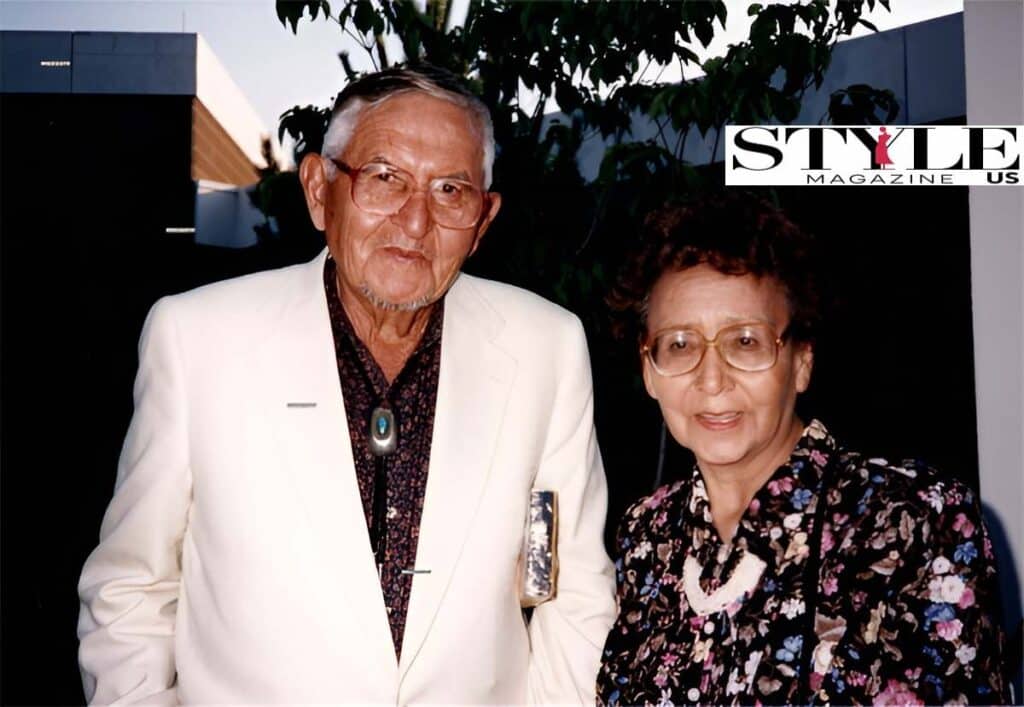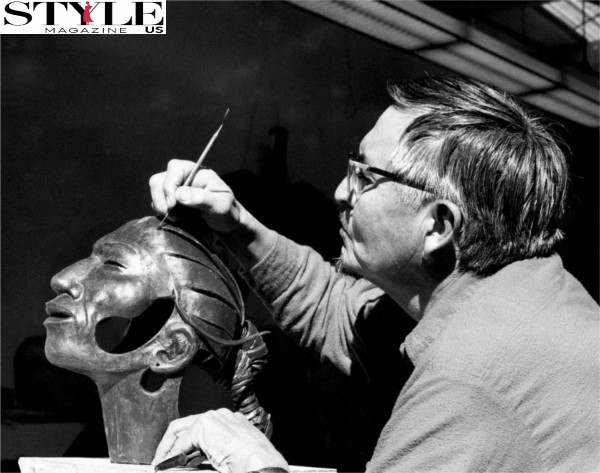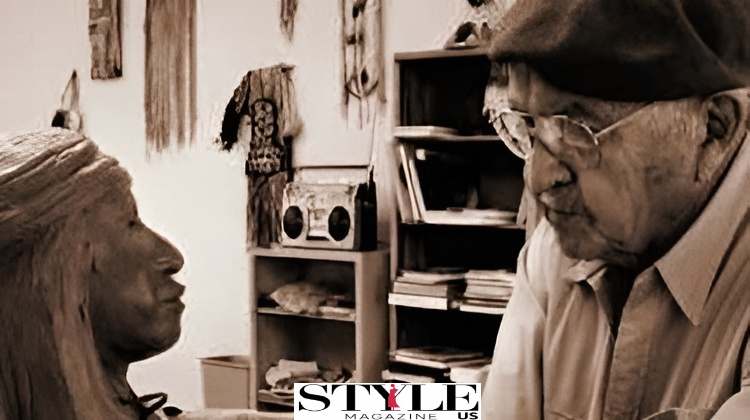Allan Haozous, better known as Allan Houser, was a groundbreaking Native American artist whose work bridged traditional indigenous themes with modernist techniques. This article delves Allan Haozous Age, Cause of Death and Net Worth, his artistic journey, and lasting impact on the world of art.
Early Life and Cultural Roots
Allan Capron Haozous was born on June 30, 1914, in Apache, Oklahoma. His Chiricahua Apache heritage played a crucial role in shaping his artistic vision and cultural identity. Haozous’s parents, Sam and Blossom Haozous, were among the last Apache people held as prisoners of war by the United States government.
Growing up at Fort Sill, Oklahoma, young Allan was immersed in a unique environment that blended harsh realities with rich cultural traditions. This early exposure to his people’s struggles and resilience would later become a wellspring of inspiration for his art.
Key facts about Allan’s early life:
- Born to Chiricahua Apache parents
- Raised at Fort Sill, Oklahoma
- Descended from a family of prisoners of war
- Great-nephew of the legendary Apache leader Geronimo
Artistic Journey and Evolution
Allan’s artistic journey began in his youth, drawing inspiration from the stories and traditions of his people. His formal education in art started at the Santa Fe Indian School, where he studied under Dorothy Dunn in her famous Studio School.
As he developed his skills, Haozous began to transition from Allan Capron Haozous to Allan Houser, a name that would become synonymous with innovation in Native American art.
“I’m trying to show the way I feel about my people through my work. I’m not trying to be an art revolutionary or an art radical. I just want to be honest.” – Allan Houser
Early Exhibitions and Recognition
Houser’s talent was recognized early, leading to several notable achievements:
- First exhibition at the Museum of New Mexico in 1936
- Participation in the 1939 New York World’s Fair
- Creation of murals for the Department of Interior in Washington, D.C.
These early successes set the stage for a prolific career that would span decades and influence generations of artists.
Sculpting a Unique Artistic Voice
Allan Houser’s artistic style was characterized by a masterful fusion of Native American themes with modernist and minimalist approaches. His work often featured stylized figures and forms that captured the essence of indigenous stories and symbols.
Breakthrough Works and Their Significance
Some of Houser’s most significant works include:
- “Comrade in Mourning” (1948): A memorial sculpture at the Haskell Institute
- “Offering of the Sacred Pipe” (1983): A bronze sculpture that exemplifies his mature style
- “As Long as the Waters Flow” (1989): A monumental bronze at the Oklahoma State Capitol
These pieces showcase Houser’s ability to convey deep cultural narratives through abstract and figurative forms.
Mastery Across Mediums
While primarily known as a sculptor, Houser was also an accomplished painter and illustrator. His versatility allowed him to express his artistic vision through various art mediums:
| Medium | Notable Characteristics |
|---|---|
| Sculpture | Fluid forms, expressive poses, use of negative space |
| Painting | Bold colors, simplified shapes, cultural symbolism |
| Drawing | Precise linework, attention to detail, capturing movement |
This diversity in his artistic practice contributed to his wide-ranging influence on the art world.
Teaching and Mentorship
Allan Houser’s impact extended beyond his personal artistry. As an educator, he played a pivotal role in shaping the future of Native American art.
Institute of American Indian Arts (IAIA)
In 1962, Houser helped establish the sculpture department at the Institute of American Indian Arts in Santa Fe, New Mexico. His teaching philosophy emphasized:
- Embracing cultural heritage
- Experimenting with modern techniques
- Developing a personal artistic voice
Many of his students went on to become renowned artists in their own right, carrying forward Houser’s legacy of innovation and cultural pride.
Major Achievements and Recognition
Throughout his career, Allan Houser received numerous accolades for his contributions to art and culture.
Notable Awards:
- Guggenheim Fellowship (1949)
- Palmes d’Académique from the French government (1954)
- National Medal of Arts (1992)
Presence in Prestigious Collections:
Houser’s work can be found in many of the world’s most respected museums and institutions:
- Smithsonian Museum of American Art
- National Museum of the American Indian
- National Portrait Gallery (Washington, D.C.)
- Art Institute of Chicago
These placements cemented his status as one of the most influential Native American artists of the 20th century.
Personal Life and Family

Despite his fame, Allan Houser remained deeply connected to his family and cultural roots. He married Anna Marie Gallegos in 1939, and together they raised five children.
Houser’s commitment to his heritage was reflected in his family life:
- He taught his children Apache traditions and language
- His home and studio became a gathering place for artists and cultural leaders
- He encouraged his children to explore their own artistic talents
This blend of family, culture, and art created a rich environment that nurtured creativity and cultural pride.
Later Years and Artistic Prime
Contrary to many artists who slow down in their later years, Houser experienced a surge of creativity after his retirement from teaching in 1975.
Post-Retirement Creative Explosion
- Established a studio and foundry in Santa Fe
- Produced some of his most iconic works during this period
- Experimented with new materials and techniques
This late-career renaissance solidified Houser’s place as a master of modern Native American art.
Allan Haozous’s Net Worth
While exact figures are difficult to determine, Allan Houser’s artistic success translated into significant financial value.
- Estimated net worth at time of death: Several million dollars
- Current value of major works: Some pieces valued at over $500,000
- Posthumous sales: His works continue to command high prices at auctions
It’s important to note that Houser’s true wealth lay in his artistic legacy and cultural impact, which far exceed any monetary valuation.
Age and Passing
Allan Houser lived a long and productive life, passing away on August 22, 1994, at the age of 80.
- Born: June 30, 1914
- Died: August 22, 1994
- Age at death: 80 years
His life spanned a period of immense change for Native American people and art, and he was at the forefront of much of that transformation.
Cause of Death
Allan Houser died from complications related to prostate cancer. His passing was mourned not only by the Native American community but by the art world at large.
- Diagnosed with prostate cancer in the early 1990s
- Continued to work and create art until shortly before his death
- Passed away at his home in Santa Fe, New Mexico
Despite his illness, Houser remained dedicated to his art, completing several significant works in his final years.
Enduring Influence and Cultural Significance
Allan Houser’s impact on Native American art and the broader art world cannot be overstated. His work continues to inspire and influence artists, collectors, and cultural institutions.
Bridging Traditions and Modernity

Houser’s unique ability to blend traditional Native American iconography with modernist and minimalist techniques created a new visual language for indigenous art.
- Challenged stereotypes about Native American art
- Expanded the possibilities for cultural expression in modern art
- Influenced both Native and non-Native artists
Educational Legacy
Through his teaching and mentorship, Houser helped shape generations of Native American artists:
- Many of his students became successful artists and educators
- His teaching methods are still influential in art education programs
- The Allan Houser Scholarship continues to support young Native American artists
Cultural Ambassador
Houser’s work served as a bridge between cultures, helping to:
- Increase appreciation for Native American art and culture
- Promote understanding of indigenous perspectives
- Preserve and evolve Chiricahua Apache artistic traditions
Conclusion: The Timeless Art of Allan Haozous
Allan Haozous, known to the world as Allan Houser, left an indelible mark on the landscape of American art. From his humble beginnings as a child of Apache prisoners to his status as a globally recognized artist, Houser’s journey embodies the resilience and creativity of Native American people.
His masterful blending of cultural heritage with modern artistic techniques opened new avenues for expression and understanding. Through his sculptures, paintings, and drawings, Houser told the stories of his people while pushing the boundaries of what Native American art could be.
As we reflect on Allan Houser’s extraordinary life and career, we are reminded of the power of art to transcend cultural boundaries and speak to the universal human experience. His legacy continues to inspire artists, scholars, and art lovers around the world, ensuring that the spirit of innovation and cultural pride he championed lives on.
To truly appreciate the depth and breadth of Allan Houser’s contribution to art and culture, one must experience his work firsthand. Whether viewed in a prestigious museum or a public space, Houser’s art continues to captivate and educate, inviting viewers to see the world through the eyes of a true artistic visionary.
FAQs
What material did Allan Houser use to create art?
Allan Houser was a versatile artist who worked with a wide range of materials throughout his career. He carved many of his sculptures from stone, including limestone, marble, and alabaster. Bronze was another favored medium, especially for his larger public sculptures.
Early in his career, Houser also worked with wood. For his two-dimensional pieces, he employed various paints, including watercolors, oils, and acrylics. Clay was often used to create initial models for his sculptures before they were cast in bronze or carved in stone. This diversity of materials allowed Houser to express his artistic vision in multiple forms, contributing to his reputation as a master of Native American art.
When was Allan Houser born and died?
Allan Houser was born on June 30, 1914, in Apache, Oklahoma. He lived a long and productive life, passing away on August 22, 1994, in Santa Fe, New Mexico. His 80-year lifespan coincided with a period of significant change for Native American people and art, during which Houser played a pivotal role in shaping modern indigenous artistic expression.
Why is Allan Houser remembered?
Allan Houser is remembered as a pioneering figure in modern Native American art. He created a unique artistic language that blended traditional indigenous themes with contemporary techniques, bridging the gap between ancient cultural narratives and modern artistic expression.
His iconic sculptures, displayed in major museums and public spaces worldwide, continue to captivate audiences and inspire artists. As a mentor and teacher at the Institute of American Indian Arts, Houser shaped generations of Native American artists, leaving an indelible mark on the art world. His numerous accolades, including the prestigious National Medal of Arts in 1992, cemented his status as one of the most influential Native American artists of the 20th century.
Why is Allan Houser important to Native American culture?
Allan Houser holds immense importance in Native American culture as a transformative figure who elevated indigenous art to international recognition. His work challenged prevailing stereotypes and expanded perceptions of Native American art, paving the way for greater appreciation and understanding of indigenous artistic expressions.
By incorporating traditional Apache stories and symbols into his modernist sculptures and paintings, Houser preserved cultural heritage while pushing it into new artistic territories. As an educator, he empowered younger generations of Native artists to embrace their roots while exploring contemporary art forms, fostering a renaissance in Native American art.
Houser’s success opened doors for other indigenous artists in mainstream art institutions, helping to amplify Native voices in the broader cultural dialogue. Today, his art continues to serve as a bridge between Native and non-Native cultures, promoting cross-cultural understanding and appreciation of indigenous perspectives.

Mark Joseph is a professional writer at Style Magazine US and has experience of more than 5 years in writing news and style articles.

